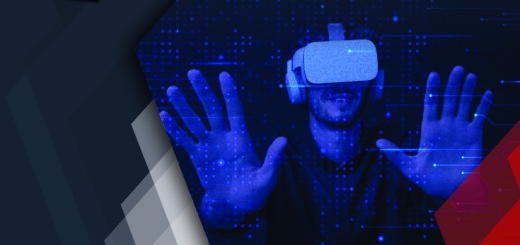Bio-printing –Patenting Issues & Benefits
3D printing, also known as additive engineering is a process of making three dimensional solid objects from a digital model. It is used to manufacture metal, ceramics, glass, and numerous other elements of the manufacturing process by companies including Boeing, General Electric and Honeywell. Bio-Printing i.e. is the art and science of CRAFTING HUMAN TISSUES, ORGANS OR EVEN COMPLETE ORGANISMS uses 3D printing technology and raw biological resources (as ink) to accomplish this.
Who invented bio-printing?
In 2002, Professor Makoto Nakamura adapted the technology used in a standard Inkjet printer to develop a bio-printer based on the observation that ink drops are nearly of the same dimension as cells of a human body. This bio-printer was able to print bio-tubing analogous to a blood vessel. For the commercial purposes, America-based Organovo Inc. pioneered and invented the first human tissue bio printer. Later, it also developed a commercial 3D bio-printer with an Australian firm, Invetech, originally called as the NovoGen MMX bio-printer. Now, the company uses it to make tissues for drug companies for medical research and therapeutic applications.
Bio-printers use a “bio-ink” made of living cell mixtures and are used to build 3D structure of cells, layer by layer, to form tissue.
They are available in different sets of configurations but almost all bio-printers produce cells from a bio-print head that shifts up and down, left and right, or back and forth to position the cells precisely and accurately where needed. Subsequently, countless layers of thin tissues accumulate to produce an organic object within a pre-determined time period. Most of the bio-printers produce a soluble gel to secure cells in the process of printing.
Bio-printing – Patenting Issues
As with all pioneering fields, patent protection is of great importance to fully capitalize on the investment made in the R&D of bio-printing. But this area of research transgresses the thin line between human and non-human living organisms. With that in mind, some patenting issues erode while claiming patent protection for artificially created living human tissue, including human organs manufactured by way of bio-printing.
In the past, patent claims including a human embryo have been rejected by the patent office under 35 U.S.C. Section 101 as being directed to a non-patentable human organism, as well as being in violation of Section 33(a) of the Leahy-Smith America Invents Act that also codifies that human organisms are not eligible for patent protection.
But a stand-alone bio-printed human organ and tissue should not be considered as encompassing a “human organism.” Moreover, bio-printed human organs and tissue should be eligible for patent protection because they are not products of nature but are man-made living materials artificially arranged in accordance with a particular printing geometry that facilitates any naturally occurring cell behavior. This is quite similar to patents directed to implants, such as U.S. Pat. No. 8,394,141 that includes claims directed to an implant formed from “fibers of defatted, shredded, allogeneic human tissue” including a “tendon, fascia, ligament, or dermis” and further including a “growth factor” for inducing growth of various cell types.
Bio-printing – Some Patent Applications Published in 2013
The domain is relatively new but many companies are filing patents for securing IP rights on this technology. Mentioned below are some of the patent applications published in 2013 in name of Organavo and Parc Científic Barcelona –
- EP2629975 A2 entitled “Devices, systems, and methods for the fabrication of tissue”
- WO 2013040078 A2 titled “Engineered tissues for in vitro research uses, arrays thereof, and methods of making the same”
- 3. WO 2013040087 A2 titled “Platform for engineered implantable tissues and organs and methods of making the same”
Assignee – Orgavano, Inc. - WO 2013139508 A1 entitled “Method for manufacturing a three-dimensional biomimetic scaffold and uses thereof”
- WO 2013063602 A1 entitled “Design and fabrication of biomimetic soft tissue scaffolds based on controlled assembly of highly crystalline beta-glucan nanofibrils and use in reconstructive surgery”
- 6. EP 2641965 A1 entitled “Method for manufacturing a three-dimensional biomimetic scaffold and uses thereof”
Assignee – Parc Científic Barcelona
Benefits of Bio-Printing to Pharma Sector
Bio-printing has the potential to play a vital role in medical research and cutting down drug testing cost. Presently, medical researchers in the pharmaceutical industry use two-dimensional cell cultures to test drugs during the early stages of development and these do not reflect human tissue as accurately as 3D printed tissue, meaning the 2D models can create misleading test results. On the other hand, 3D tissues provide more precise results, which allows for pharmaceutical companies to determine failed drugs early on before investing more money in development. And with the rising cost of clinical trials (that account for the largest percentage of the biopharmaceutical industry’s budget for the R&D), it’s no surprise that bio-printing shall be perceived well by the drug companies to help avoid wasted costs.
Thus, Organovo, which trades on the OTC market, is offering solutions to drug businesses. The company, which has made customized types of tissues, e.g. blood vessels, lung tissue and recreated tumors using bio-printing has partnered with Pfizer and United Therapeutics (medical research partners) for R&D funding.
Research breakthroughs
Medical researchers hope to be able to use the printed tissue to make organs for organ replacement. However, growing functional organs for regenerative therapies is still a far-fetched dream. But presently it has found use to make slight advancements in alternative ways.
1. Scientists at Heriot-Watt University are busy in research and production of advanced bio-printers to print functional human organs
2 . Researchers at Wake Forest University in North Carolina in collaboration with the Armed Forces Institute for Regenerative Medicine have made a 3-D skin printer that deposits cells directly on a wound to help it heal quicker. They have also successfully printed off kidney cells.
3. Bioengineers at Cornell University have printed experimental knee cartilage, heart valves and bone implants.
4. A non-medical start-up Modern Meadow, which is backed by investor Peter Thiel, is using bio-printing technology to develop a way to print meat.
In Dentistry
Researchers at Columbia University Tissue Engineering and Regenerative Medicine Lab are working on the use of bio-printing technology in bone and dental restoration. They have successfully implanted a bio-printed 3-D scaffold in the jawbone of a rat by using small, interlocking micro canals made of stem cell substances.
Blood vessel bio-printing
Researchers at Saga University in Japan and startup Cyfuse Biomedical have yielded a breakthrough in bio-printing. Taking cells from a patient’s skin, researchers have successfully printed arteries that can be used in dialysis treatment and coronary artery bypass surgery. Currently evaluation of procedures for testing the new bio-printing method on animals is underway and predictions are that human therapies using bio-printed blood vessels could begin as early as 2018.
Conclusion
Bio-printing technology which is still in its developmental stage is faced with many challenges. Foremost is printing live and functional human organs. Till now, such attempts have had little relevance in the medical research. However, it is a positive development in human cell tissue production research and will be much useful in transplantation of human tissue and further research thereof in future.
Our Services:
Patent Drafting Support | Fixed and Cost-effective Patent Searches| Patent Searches | Prior Art Search | Bio-Sequence Patents




